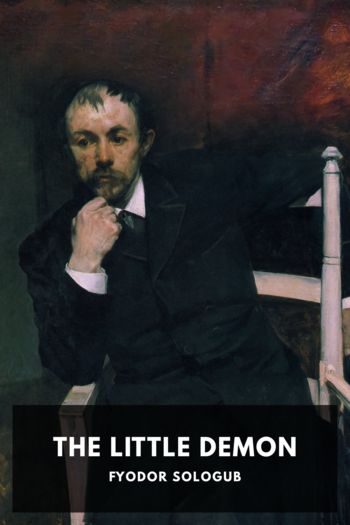A Tangled Tale by Lewis Carroll (best novels for beginners TXT) 📕

- Author: Lewis Carroll
Book online «A Tangled Tale by Lewis Carroll (best novels for beginners TXT) 📕». Author Lewis Carroll
There are yet two zeroes to dispose of. Minerva assumes that, on every occasion, a son comes of age; and that it is only such a son who is “tipped with gold.” Is it wise thus to interpret “now, my boys, calculate your ages, and you shall have the money”? Bradshaw of the Future says “let” the ages at first be 9, 6, 3, then assumes that the second occasion was 6 years afterwards, and on these baseless assumptions brings out the right answers. Guide future travellers, an thou wilt: thou art no Bradshaw for this Age!
Of those who win honours, the merely “honourable” are two. Dinah Mite ascertains (rightly) the relationship between the three ages at first, but then assumes one of them to be “6,” thus making the rest of her solution tentative. M. F. C. does the algebra all right up to the conclusion that the present ages are 5z, 6z, and 7z; it then assumes, without giving any reason, that 7z=21.
Of the more honourable, Delta attempts a novelty—to discover which son comes of age by elimination: it assumes, successively, that it is the middle one, and that it is the youngest; and in each case it apparently brings out an absurdity. Still, as the proof contains the following bit of algebra, “63=7x+4y; ∴ 21=x+4 sevenths of y,” I trust it will admit that its proof is not quite conclusive. The rest of its work is good. Magpie betrays the deplorable tendency of her tribe—to appropriate any stray conclusion she comes across, without having any strict logical right to it. Assuming A, B, C, as the ages at first, and D as the number of the years that have elapsed since then, she finds (rightly) the 3 equations, 2A=B, C=B+A, D=2B. She then says “supposing that A=1, then B=2, C=3, and D=4. Therefore for A, B, C, D, four numbers are wanted which shall be to each other as 1:2:3:4.” It is in the “therefore” that I detect the unconscientiousness of this bird. The conclusion is true, but this is only because the equations are “homogeneous” (i.e. having one “unknown” in each term), a fact which I strongly suspect had not been grasped—I beg pardon, clawed—by her. Were I to lay this little pitfall, “A+1=B, B+1=C; supposing A=1, then B=2 and C=3. Therefore for A, B, C, three numbers are wanted which shall be to one another as 1:2:3,” would you not flutter down into it, oh Magpie, as amiably as a Dove? Simple Susan is anything but simple to me. After ascertaining that the 3 ages at first are as 3:2:1, she says “then, as two-thirds of their sum, added to one of them, = 21, the sum cannot exceed 30, and consequently the highest cannot exceed 15.” I suppose her (mental) argument is something like this:—“two-thirds of sum, + one age, = 21; ∴ sum, + 3 halves of one age, = 31 and a half. But 3 halves of one age cannot be less than 1 and-a-half (here I perceive that Simple Susan would on no account present a guinea to a newborn baby!) hence the sum cannot exceed 30.” This is ingenious, but her proof, after that, is (as she candidly admits) “clumsy and roundabout.” She finds that there are 5 possible sets of ages, and eliminates four of them. Suppose that, instead of 5, there had been 5 million possible sets? Would Simple Susan have courageously ordered in the necessary gallon of ink and ream of paper?
The solution sent in by C. R. is, like that of Simple Susan, partly tentative, and so does not rise higher than being Clumsily Right.
Among those who have earned the highest honours, Algernon Bray solves the problem quite correctly, but adds that there is nothing to exclude the supposition that all the ages were fractional. This would make the number of answers infinite. Let me meekly protest that I never intended my readers to devote the rest of their lives to writing out answers! E. M. Rix points out that, if fractional ages be admissible, any one of the three sons might be the one “come of age”; but she rightly rejects this supposition on the ground that it would make the problem indeterminate. White Sugar is the only one who has detected an oversight of mine: I had forgotten the possibility (which of course ought to be allowed for) that the son, who came of age that year, need not have done so by that day, so that he might be only 20. This gives a second solution, viz., 20, 24, 28. Well said, pure Crystal! Verily, thy “fair discourse hath been as sugar”!
Class List.
Algernon Bray.
An Old Fogey.
E. M. Rix.
G. S. C.
S. S. G.
Tokyo.
T.





Comments (0)